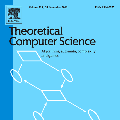A string $w$ is said to be a minimal absent word (MAW) for a string $S$ if $w$ does not occur in $S$ and any proper substring of $w$ occurs in $S$. We focus on non-trivial MAWs which are of length at least 2. Finding such non-trivial MAWs for a given string is motivated for applications in bioinformatics and data compression. Fujishige et al. [TCS 2023] proposed a data structure of size $\Theta(n)$ that can output the set $\mathsf{MAW}(S)$ of all MAWs for a given string $S$ of length $n$ in $O(n + |\mathsf{MAW}(S)|)$ time, based on the directed acyclic word graph (DAWG). In this paper, we present a more space efficient data structure based on the compact DAWG (CDAWG), which can output $\mathsf{MAW}(S)$ in $O(|\mathsf{MAW}(S)|)$ time with $O(e)$ space, where $e$ denotes the minimum of the sizes of the CDAWGs for $S$ and for its reversal $S^R$. For any strings of length $n$, it holds that $e < 2n$, and for highly repetitive strings $e$ can be sublinear (up to logarithmic) in $n$. We also show that MAWs and their generalization minimal rare words have close relationships with extended bispecial factors, via the CDAWG.
翻译:暂无翻译



